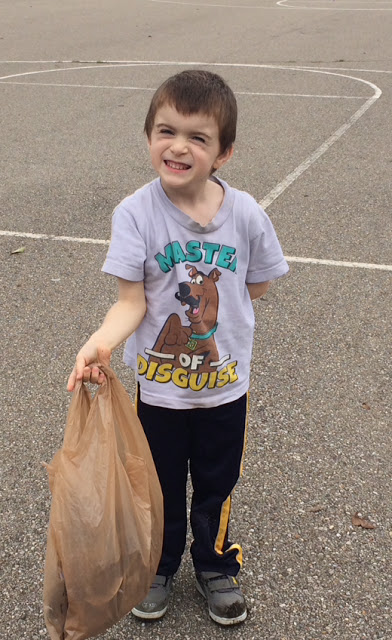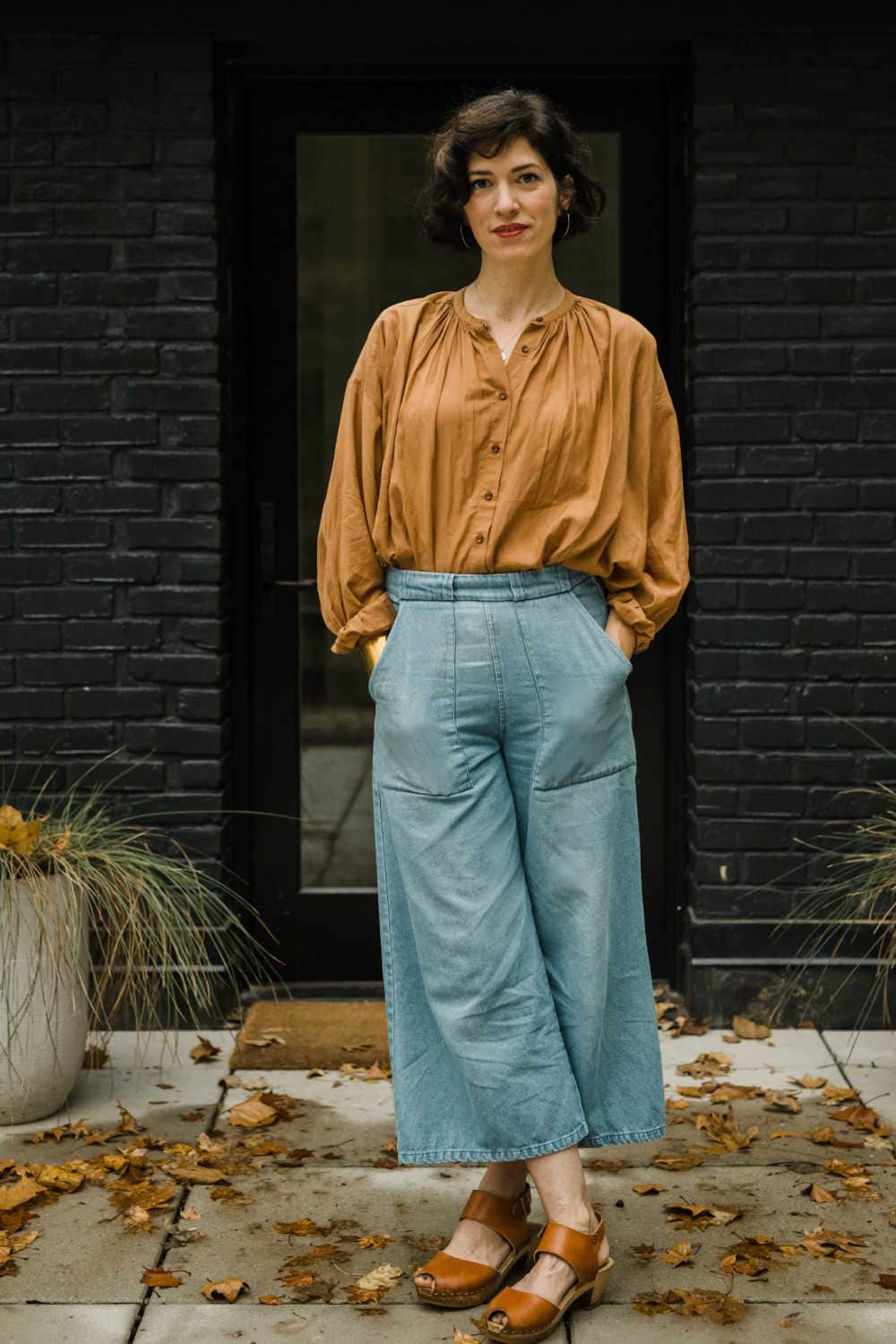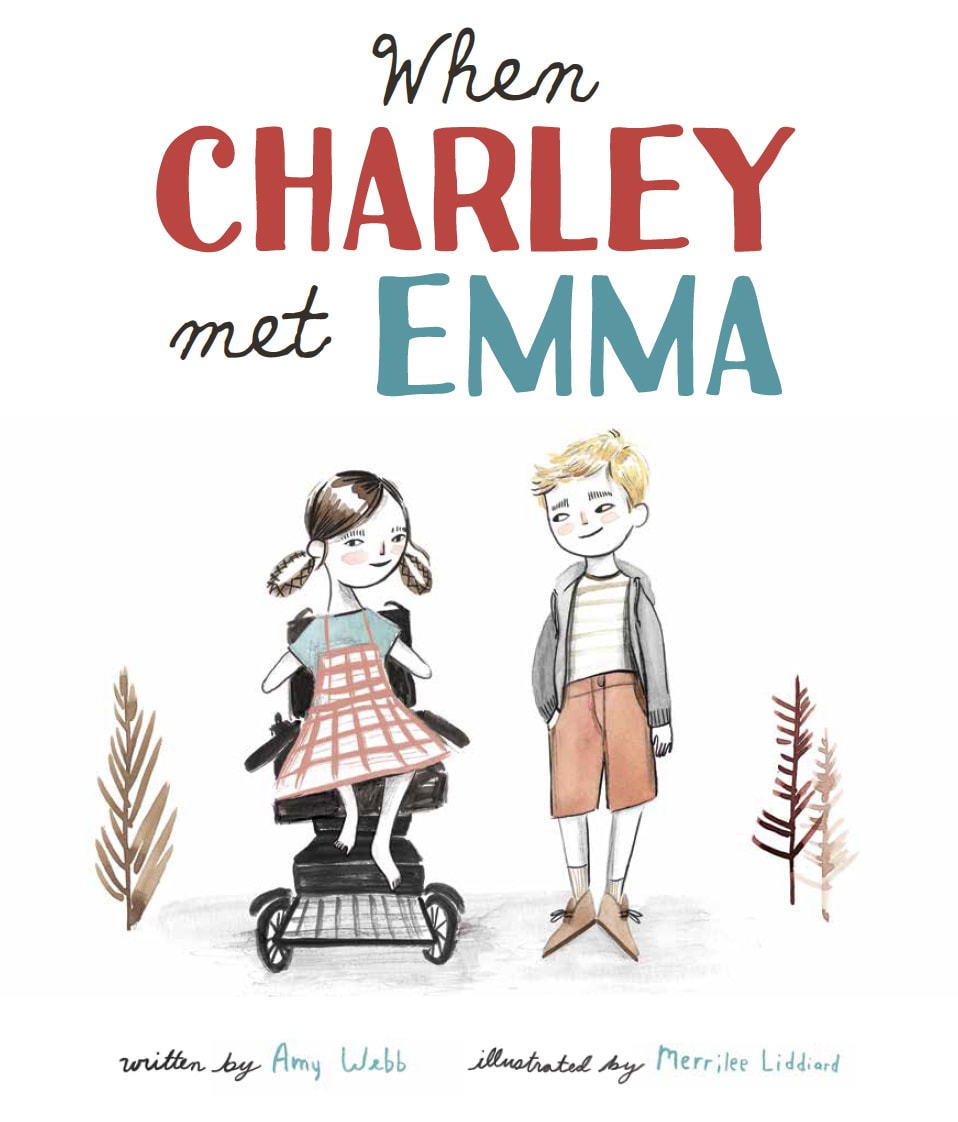Hi, my name is Helen and I live in Cincinnati, Ohio with my husband Sean and our six children, Hannah (19), Liam (12), Finn (10), Reilly (8), Dylan (5) and Cillian (1). I look forward to reading the spotlight each week, so I’m honored to have the opportunity to talk more about my son Dylan and his journey with a disease called Eosinophilic Esophagitis (EoE).
Miggy: Welcome Helen! I’m so excited to have you here today and to learn more about your son and his condition which is called Eosinophilic Esophagitis. First, can you take me back to the day you knew something wasn’t quite right with your son? Was it before birth, shortly after or sometime after that? Do you remember how you felt? Can you compare those first thoughts and feelings with how you feel now?
Helen: My pregnancy was normal as was Dylan’s birth. We noticed immediately that he was smaller than our other children and very unhappy. He needed to be swaddled tightly and moved almost constantly. Dylan didn’t arch his back while nursing or show any signs of reflux. He just didn’t have much of an appetite. At his fourth month doctor visit, his failure to gain sufficient weight was already starting to raise flags, and the doctor recommended introducing baby cereal. Cereal didn’t help with weight gain, so we began visiting specialists, running tests and starting therapies. Dylan’s first diagnosis was Failure to Thrive, and it devastated me. I felt responsible and wanted more than anything to figure out what was going on and how to help him. I spent countless time researching conditions and diseases. I spent a similarly frustrating amount of time searching for the perfect food or drink that he would like. I thought that if I could find the right cup, the perfect spoon, the magic food, then maybe my son would eat. Dylan didn’t receive the EoE diagnosis until he was 18 months old, and the diagnosis hasn’t necessarily led to the clarity and answers I hoped it would. I am definitely in a different place today, though. I’ve stopped trying to “fix” Dylan. I want him to have a relationship with food only if he wants to. I don’t want him to eat by mouth to make me happy. That won’t be sustainable. I’ve found a way to meet him where he is at and work from there. The shift in mindset has really helped take the pressure off of me and off of him. I do have general worries for his health and well-being, but I also recognize that this is his journey.
Miggy: Will you please educate us about Eosinophilic Esophagitis–what are the hallmarks of the condition and how does it affect you and your son’s day-to-day life?
Helen: Eosinophilic Esophagitis (EoE) is a newly recognized chronic disease that affects 1 in every 2,000 people. It occurs when white blood cells, eosinophils, accumulate in the esophagus and attack the tissue causing injury and inflammation. The eosinophils are triggered by an allergic reaction to a food or environmental allergen. Symptoms vary by individual. Infants and toddlers typically have issues with eating and growing. School age children often have stomach pain, trouble swallowing and vomiting. Teenagers and adults may experience painful swallowing and food impaction. One of the hardest things about EoE is that the only way to monitor the eosinophils is to take biopsy samples of the esophagus during a procedure called an endoscopy. A long narrow tube (endoscope) containing a light and a camera is put down the throat into the esophagus and through the stomach while the patient is under anesthesia. Because outward symptoms don’t always match what is going on in the esophagus, scopes and biopsies need to be conducted on a regular basis to monitor the disease. For example, Dylan had a period of time where he would throw up daily. When he had a scope, I expected eosinophils to be present in his esophagus, but there were none. On his most recent scope, there was widespread damage in his esophagus and eosinophils present, but he was not having any outward symptoms. In fact, he was doing very well with eating. As far as treatment of EoE goes, there are several options. Allergy testing can help show which foods to eliminate. This testing works in many cases but not all. No foods showed up as allergens for Dylan. Currently he takes an acid blocker medicine to help with the disease. Some people with EoE rely on special types of formulas, eliminating food from their diets, and/or using swallowed steroids. There is no cure for EoE at this time, and EoE seems to affect everyone who has it differently. Here is a video I made to celebrate Feeding Tube Awareness Week that gives you a little peek into our life.
The primary way that EoE affects Dylan’s daily life is in his limited relationship with food. Some of the professionals that we have worked with believe that Dylan stopped eating because it was painful. Trusting that food is safe and eating again has been a slow process. Since the age of one, Dylan has been fed through a feeding tube. Four years later, he has made huge strides, but he still needs the G-tube for almost all of his nutrition. Dylan used to choke and gag every time he ate. Thankfully that has improved greatly. He didn’t say he was hungry until he was four years old, and I didn’t even recognize the phrase when he said it. His relationship with food changed the dynamics of family meals and how we approached holidays like Thanksgiving, Halloween and birthdays for several years. As he has gotten older, though, he has found his own way to participate, and we’ve followed his lead. He’ll fill his plate with foods he wants at dinner and only eat a small portion of them, decorate cookies at school and pass on eating them, and trick or treat and give the candy to his siblings. He doesn’t seem to be bothered by his limited relationship with food, so we aren’t either. We are happy to have him join us in whatever way he chooses!
Miggy: What are the biggest worries you face for your son?
Helen: I worry the most about Dylan when he is sick. He gets sick easily, and it doesn’t take much to reduce him to a very sickly and frail child. I also worry that he’ll come to a point where he won’t want to use his G-Tube anymore for nutrition but won’t yet have the skills and or appetite needed to consume enough calories by mouth. I worry that he’ll resent his tube and see it as something that sets him apart from others instead of the amazing tool that keeps him alive. I worry that we may have to remove foods from his diet if his disease cannot be controlled by medication. For a child with such a complicated relationship with food, taking food away that he’s become comfortable with would be devastating.
Miggy: Now for a lighter question, I’m a big believer in seeing the humor in life and learning to laugh, so have you ever had any funny conversations/moments you never imagined due to your special needs situations?
Helen: A couple instances came to mind. First, Dylan and I were at the park one day, and a mom and her son approached us. The other child had crackers and the mom offered some to Dylan. I responded, “oh, no thanks. He doesn’t eat food.” She didn’t quite know how to respond. We didn’t eat out at restaurants very often, but when we did we rarely ordered anything for Dylan. That must have been confusing for the restaurant staff and for other diners around us. Also, Dylan used to throw up multiple times a day, to the point that my husband and I had classifications for what type of vomit it was – sick vomit, hiccup/running/laughing vomit or random vomit. Dylan has thrown up in public before, and I’ve explained to people around us that he’s not sick, it’s just the way his system works. I’m not sure how many people actually believed me.
Miggy: How can people best approach or respond to your son? Is there something you wish other people knew so as to avoid awkward or hurtful situations?
Helen: If we are feeding Dylan in public (like at the park, a soccer game, school event), I often explain what we are doing to any children who might be nearby. I explain the process and point out the cool things that he can do with a G-Tube like eat while sleeping, take medicine through his stomach, and get nutrients from veggies without tasting them. I try to explain that even though Dylan’s food is all blended up, it’s not much different than what they have on their dinner plate each night. In the beginning of our journey, it was painful when people doubted that Dylan wouldn’t really eat by mouth. They struggled to understand that he wouldn’t even eat a cookie or ice cream. My husband was great about this when it happened, and he would encourage people to try and get him to eat it. That made them stop mentioning ideas pretty quickly when they too experienced how difficult it was to feed Dylan.
Miggy: If you could say something to the mom who just starting on this journey of Eosinophilic Esophagitis, what would you say? What would you say to yourself if you could go back in time?
Helen: I would reassure her that she and her family are not alone, because it can definitely feel that way sometimes. I would tell her that EoE is a very complicated disease and that treatment does not necessarily follow a straightforward path. I’d encourage her to work towards a new normal for her family. Advise her to have patience with herself and not be afraid to follow her child’s lead. Find good medical professionals to work with. Be prepared to educate others and advocate on behalf of your child. Being the parent of a child with a chronic disease is extremely challenging, and it will change you. Finally remember that your child is so much more than the disease. Dylan amazes me daily with his determination and strength. For years he would choke or gag every time he put food in his mouth but he never stopped trying. I would have quit. He never lets his smaller size stop him. He’s always looking for a way to adapt and manage. He is by far my most independent child. .jpeg)
Miggy: Lastly, what is the biggest lesson you’ve learned since becoming a special needs mom?
Helen: I think the biggest lesson I have learned since becoming a special needs mom is the need for flexibility and to embrace living in the moment. I used to be a planner, and I’ve had to modify that in many ways. Today I plan for being interrupted and for any plans that I do make to be altered. I plan for illness and for vomit and for days that are hard. I hope for days that are calm and easy and definitely enjoy them when they come. Putting less on my to-do list eases the stress and makes me much more intentional with how I spend my time. I think I can be a better mom when I embrace all aspects of our days – the good and the bad. I don’t feel like a victim or become consumed with pity, and instead I embrace the fullness of our life and just live it.

.jpg)



Thanks for sharing you story!
Construction estimating software will enable you to keep track of every expense, every day and produce analysis and reports on demand, without getting out your calculator. construction contractors montebello
Home improvement projects that involve remodeling need to be well thought out, so that they do not look out of place in the house. window maintenance
The website is looking bit flashy and it catches the visitors eyes. Design is pretty simple and a good user friendly interface. best toilet brand